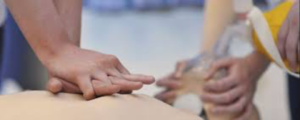Dr David Barrett – Academic Manager, Faculty of Health Sciences, University of Hull
This week’s EBN Twitter chat is on Wednesday 4th October 2017 between 8 pm and 9 pm (UK time) and will explore ‘Family-witnessed resuscitation in hospitals’. The chat will focus on benefits, challenges and best practice in this area of care.
To participate in the Twitter chat, you will need a Twitter account. If you do not have an account, you can create one easily at www.twitter.com. Once you have an account, it is easy to get started. You can follow the discussion on Twitter by searching for #ebnjc – this is the EBN Twitter chat hashtag and by searching for this in Twitter, you’ll only see the relevant tweets related to the Twitter chat. Include #ebnjc in every tweet you send, to ensure that everyone participating in the Twitter chat can see your tweet. But remember, each tweet is limited to 140 characters of text, so make your tweets informative and concise.
It is over 20 years since the Resuscitation Council (UK) published the report ‘Should relatives witness resuscitation?’ The report concluded that relatives should be offered the opportunity to be present during resuscitation and identified several recommendations for best practice. In 2002, the Royal College of Nursing (RCN) published their own guidelines, stating that witnessed resuscitation should be supported in accordance with the wishes of relatives.

Despite the long-held belief of the Resuscitation Council (UK) and the RCN that families should be permitted to be present during resuscitation, the subject remains a contentious one. Though there is evidence that being present at resuscitation attempts can lead to reduced incidence of post-traumatic stress disorder symptoms in relatives (Jabre et al, 2013), concerns from healthcare practitioners – such as altered decision-making ability or lack of support for family members – act as powerful barriers to implementation (Sak-Dankosky et al, 2017).
This week’s Twitter feed will focus on four key questions;
- What is current practice in relation to family-witnessed resuscitation in your area of work?
- What benefits have you seen, or do you envisage, from giving families the choice to be present during resuscitation?
- What challenges are there to facilitating family-witnessed resuscitation?
- How can nurses best support families during resuscitation attempts?
References
Jabre P, Belpomme V, Azoulay E (2013) Family presence during cardiopulmonary resuscitation. New England Journal of Medicine 368:1008-1018
Resuscitation Council (UK) (1996) Should relatives witness resuscitation? Available from https://www.resus.org.uk/archive/archived-cpr-information/should-relatives-witness-resuscitation/
Royal College of Nursing (2002) Witnessing resuscitation: Guidance for nursing staff. Available from https://my.rcn.org.uk/__data/assets/pdf_file/0006/78531/001736.pdf
Sak-Dankosky N, Andruszkiewicz P, Sherwood PR, Kvist T (2017) Health care professionals’ concerns regarding in-hospital family-witnessed cardiopulmonary resuscitation implementation into clinical practice. Nursing in Critical Care DOI: 10.1111/nicc.12294